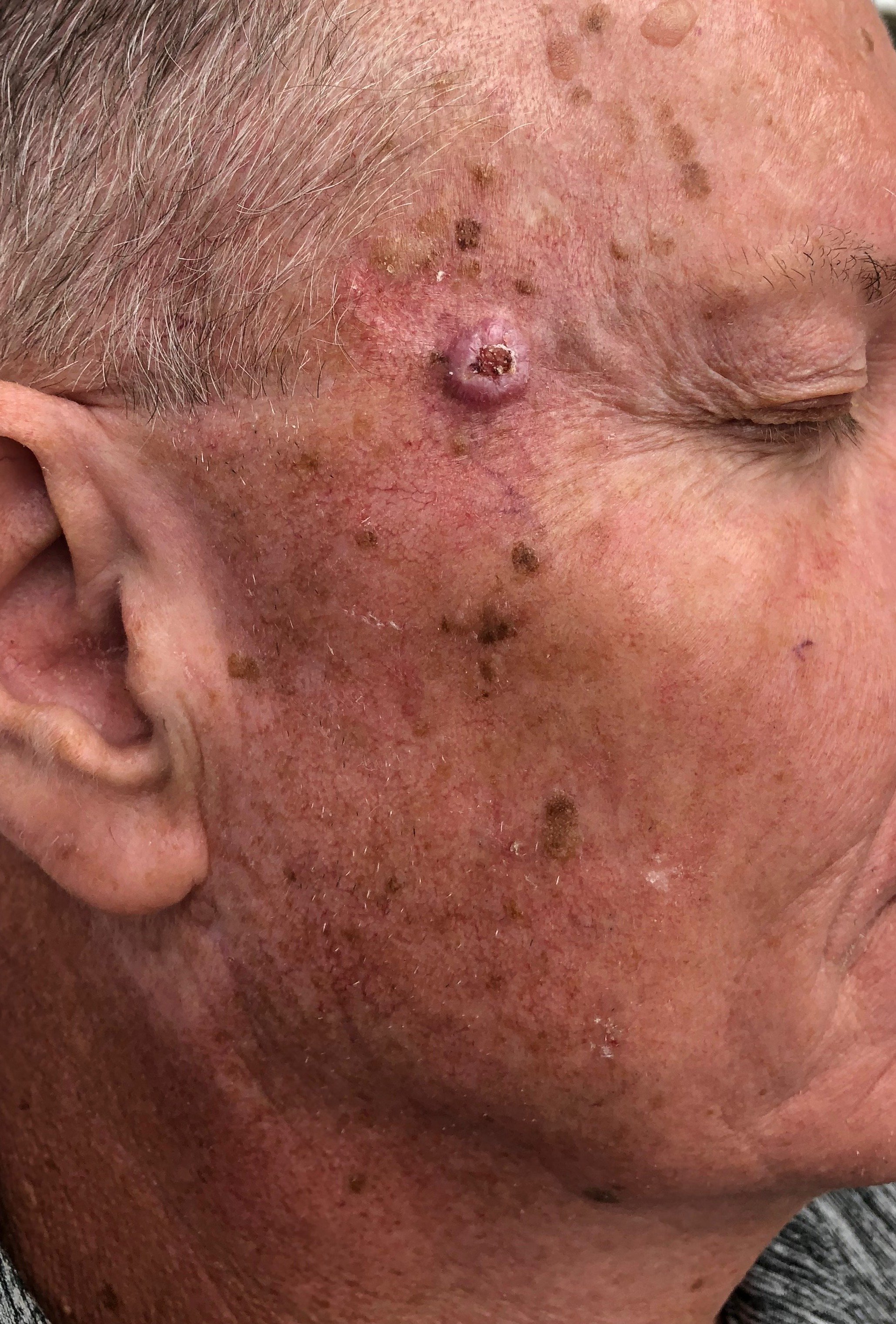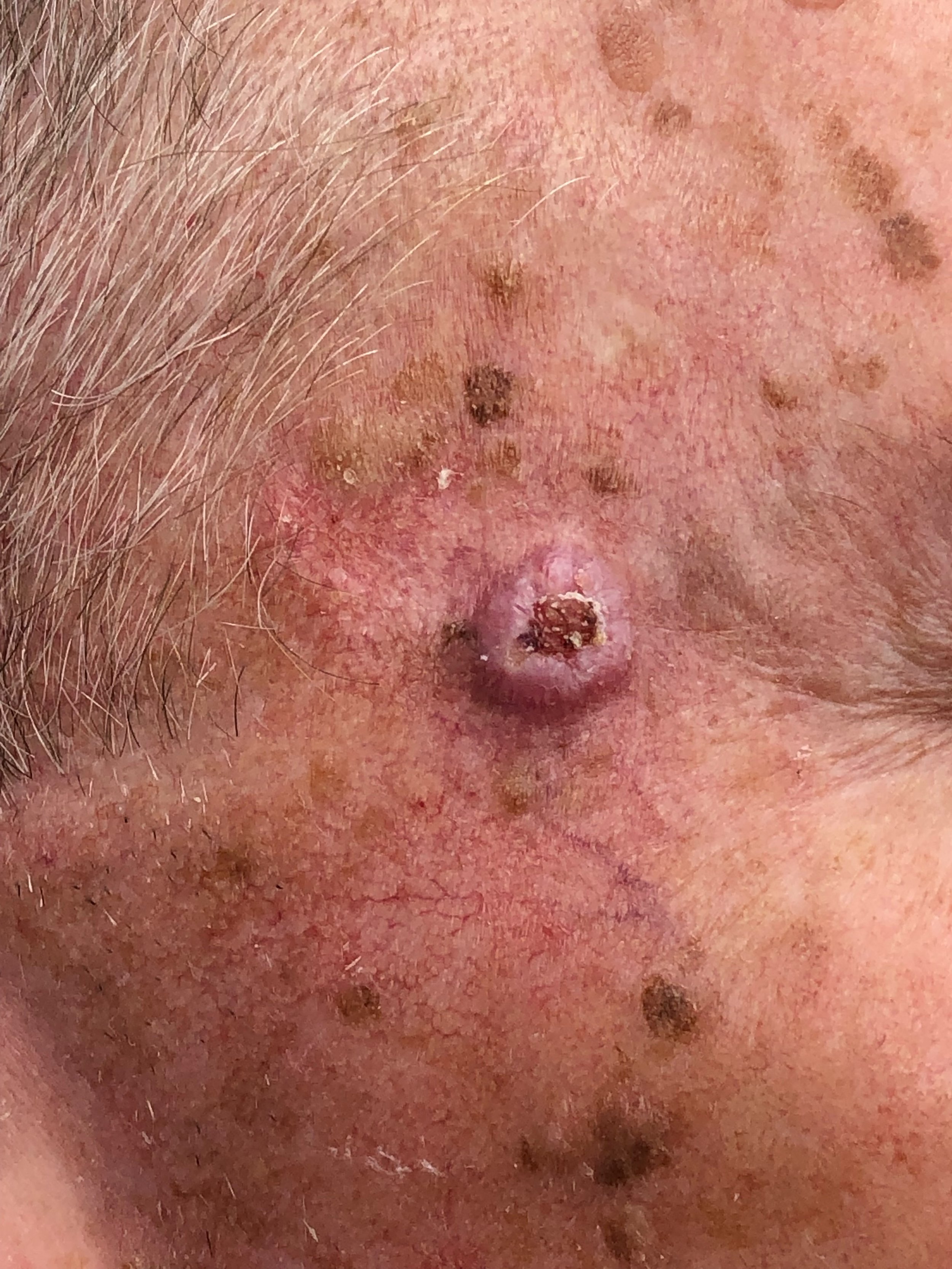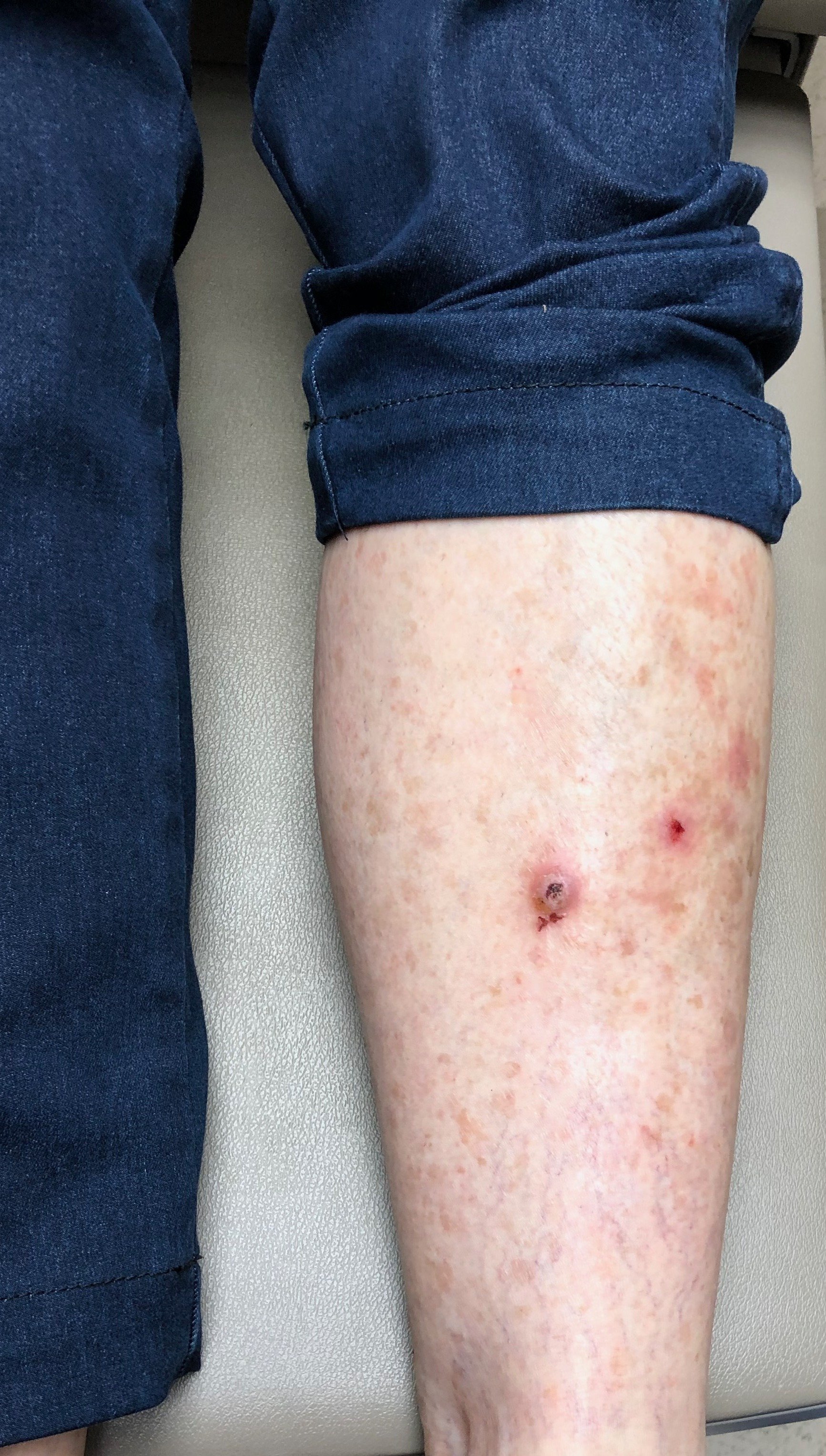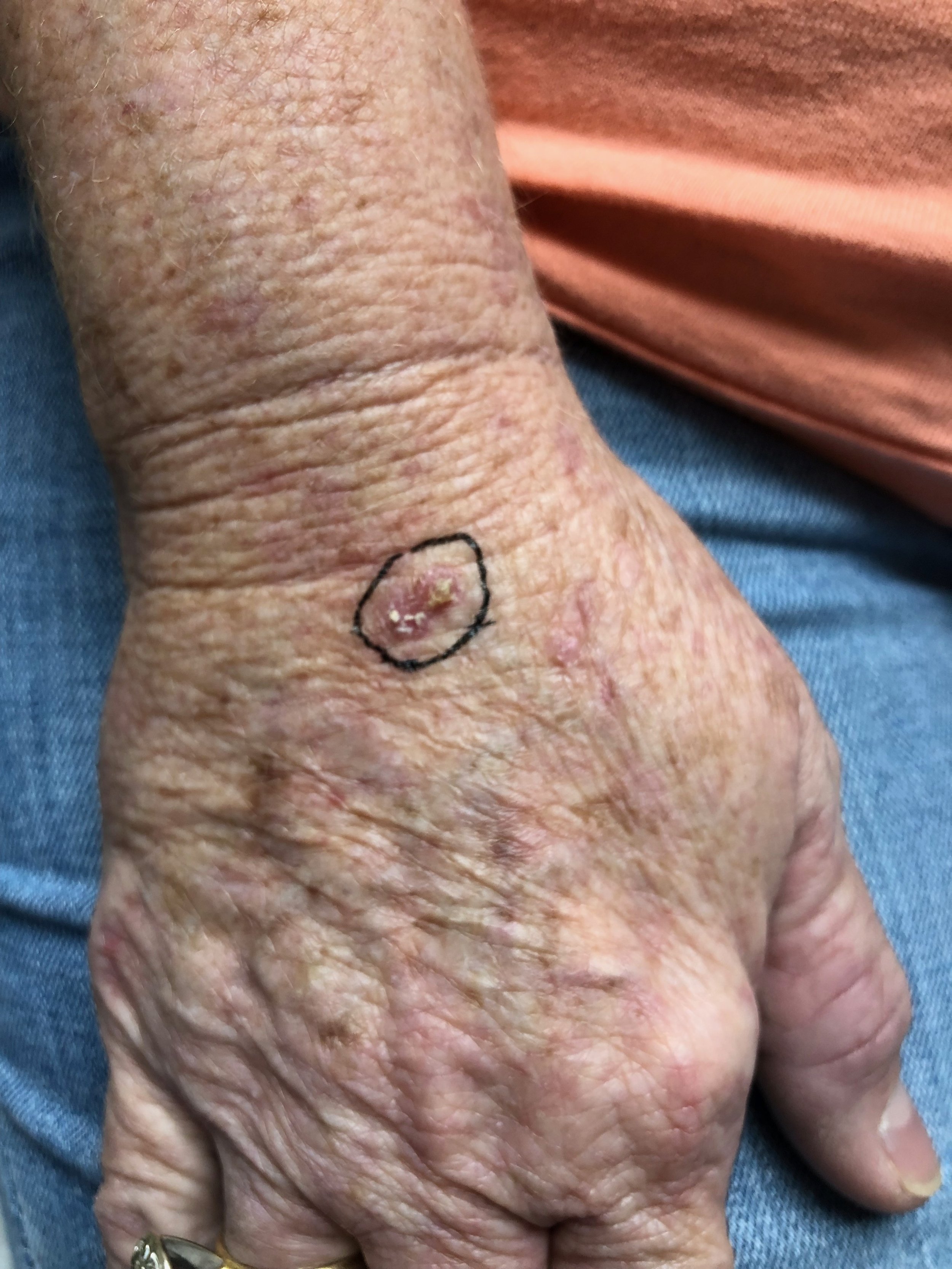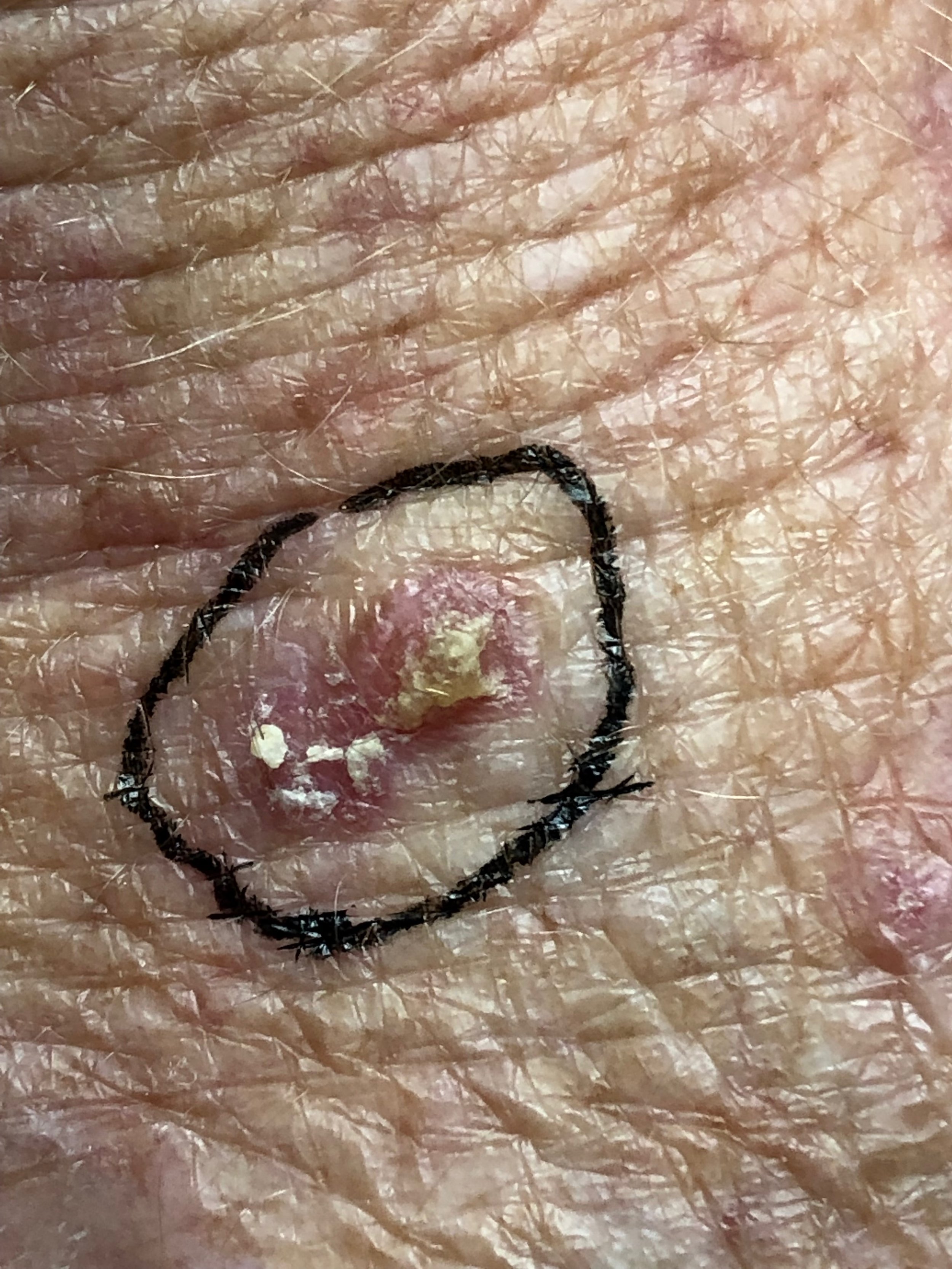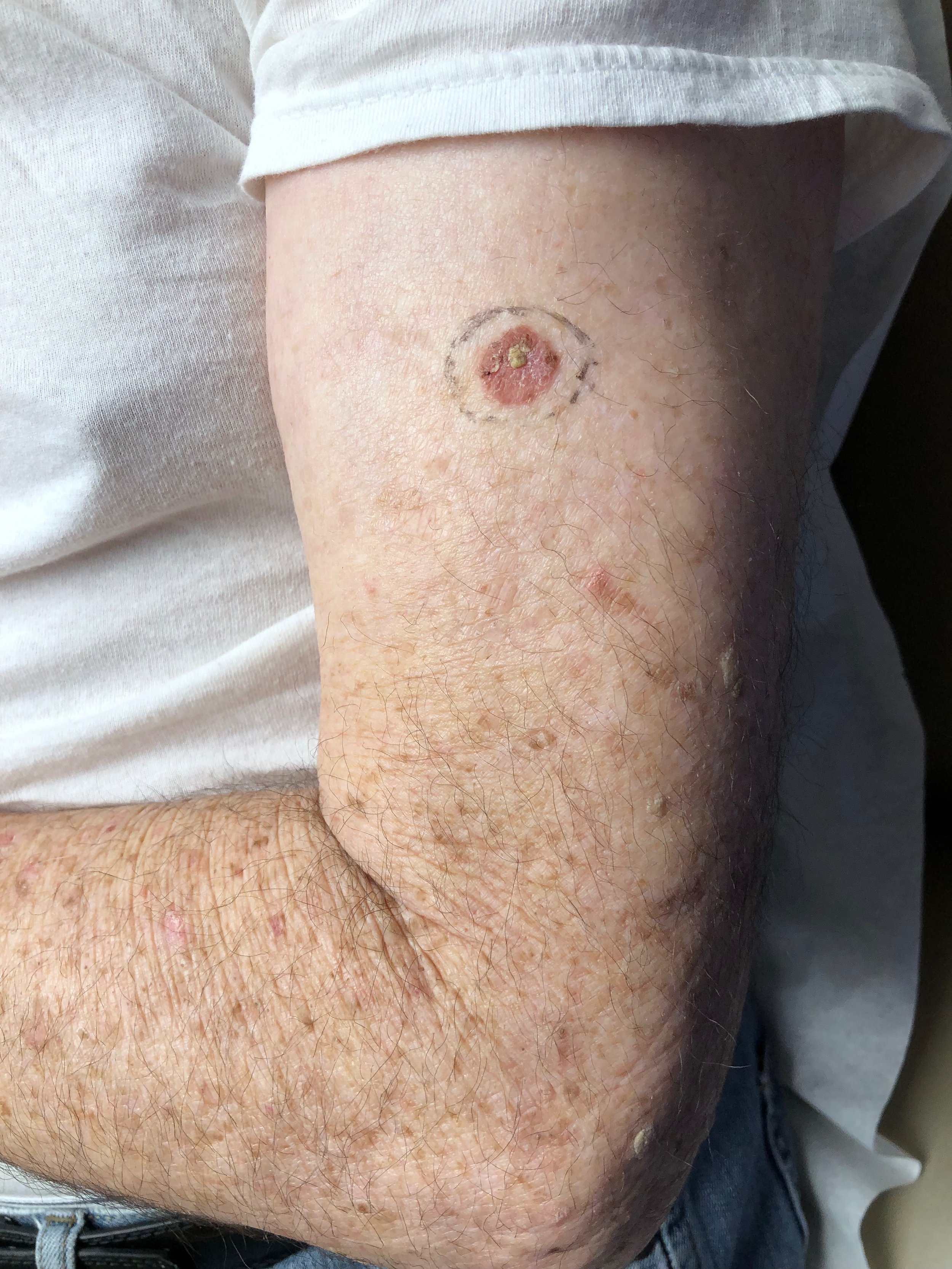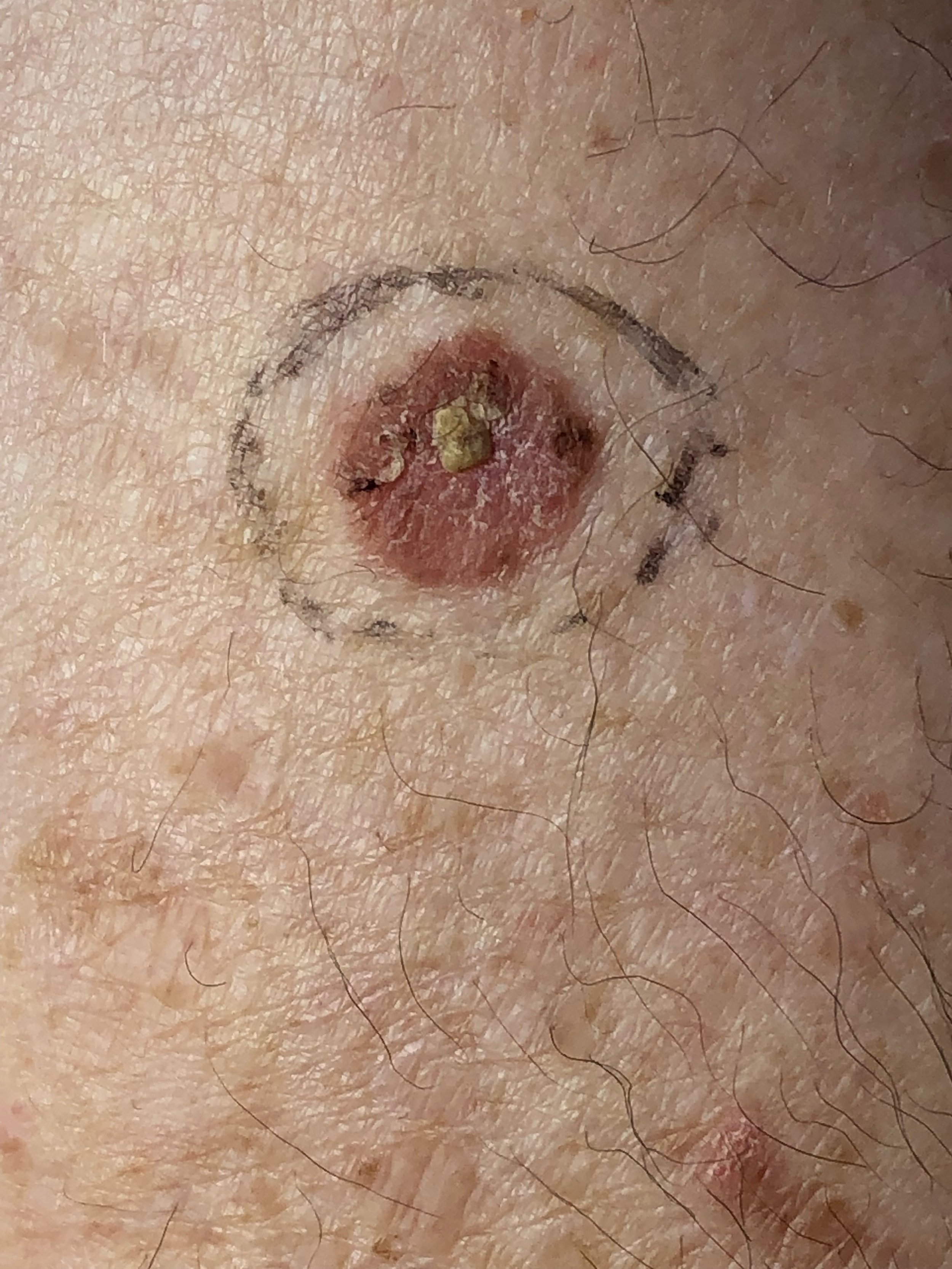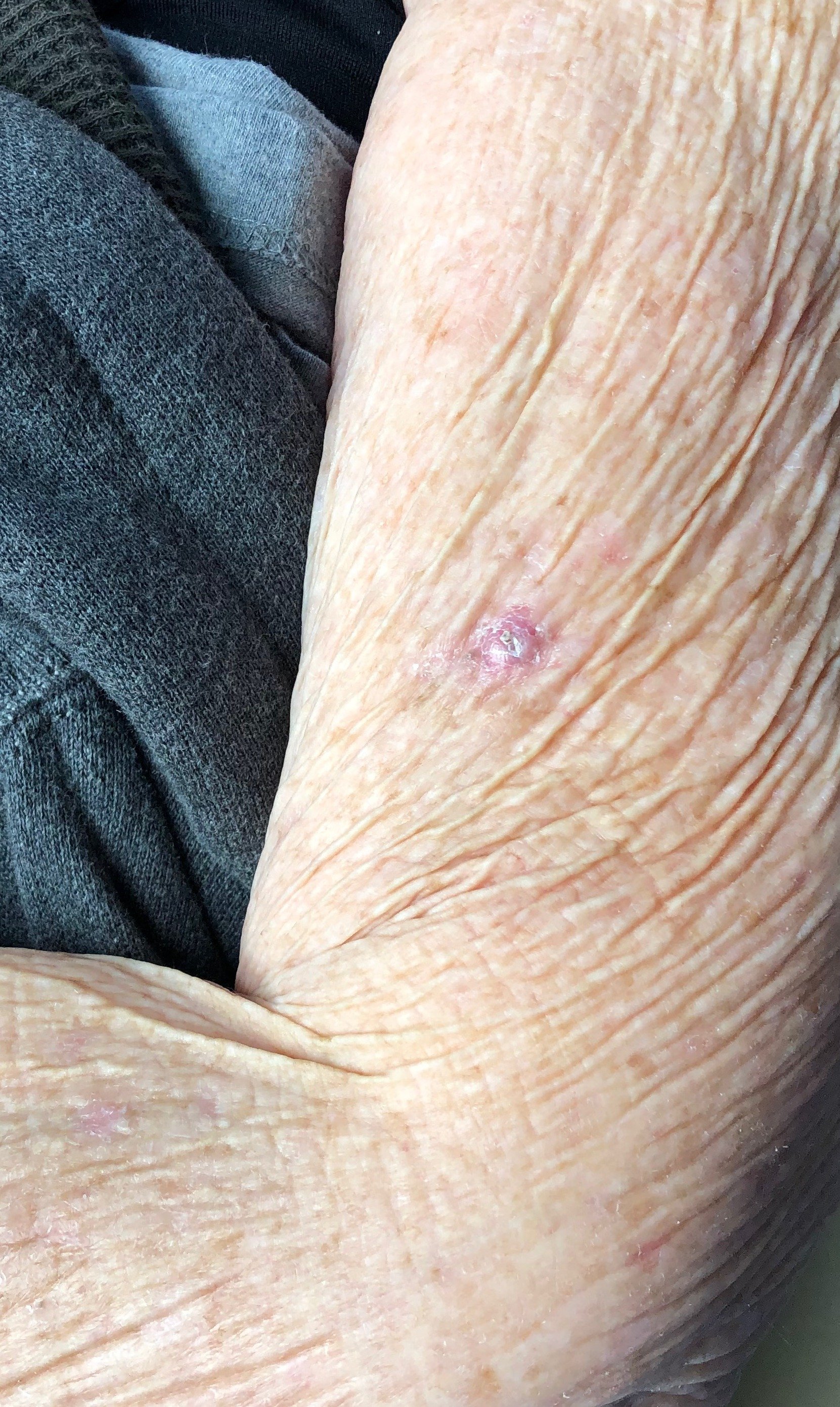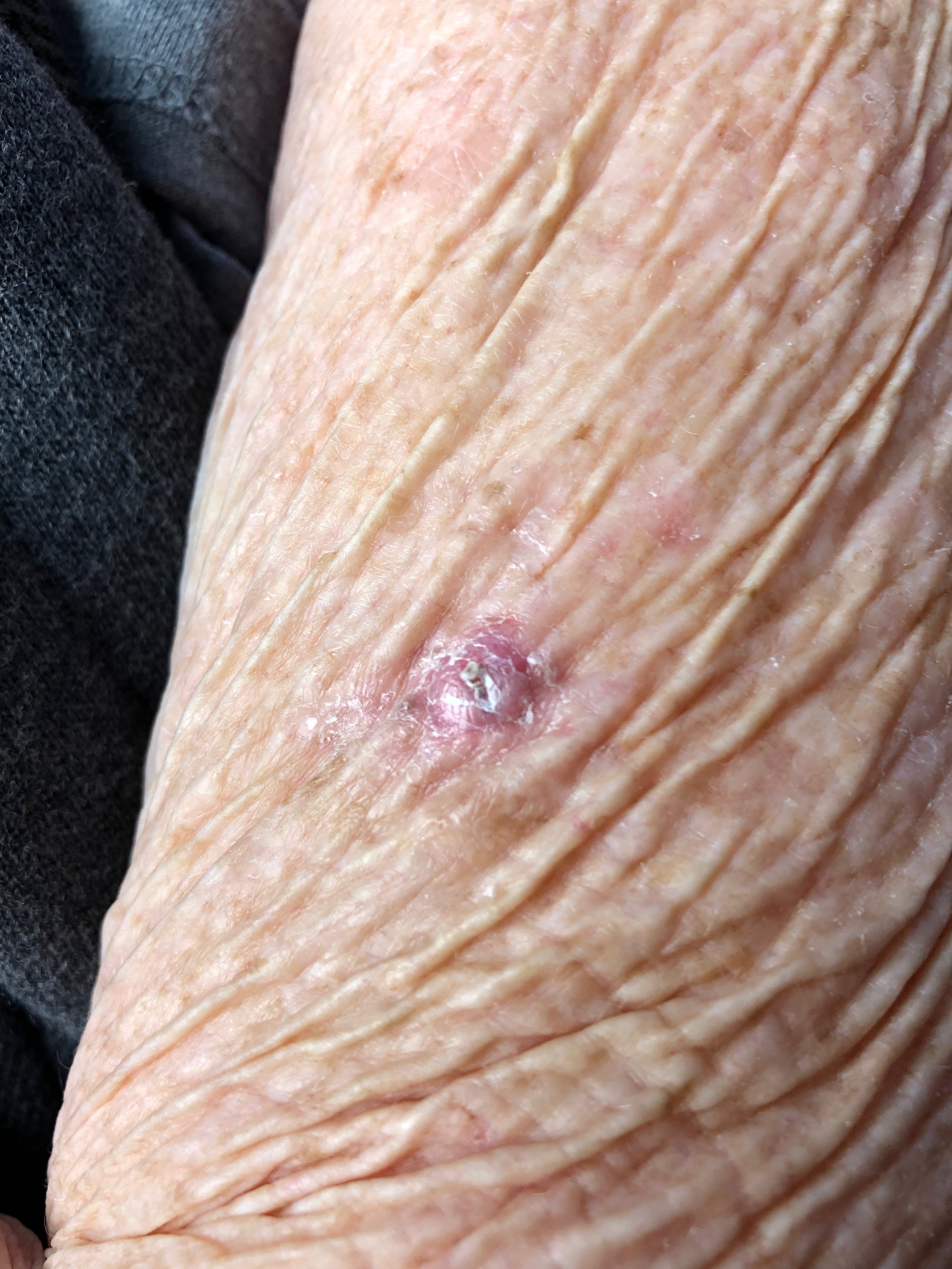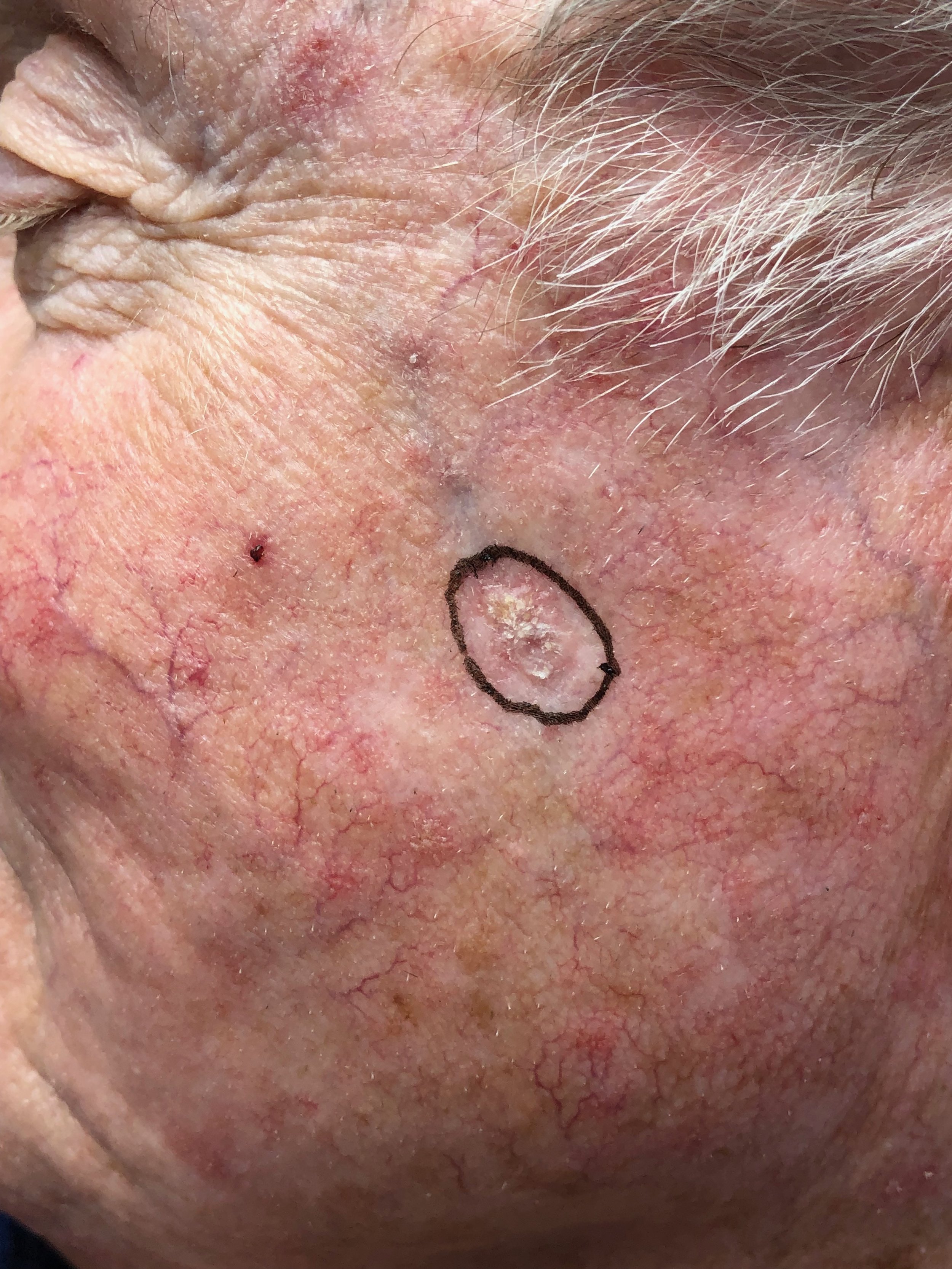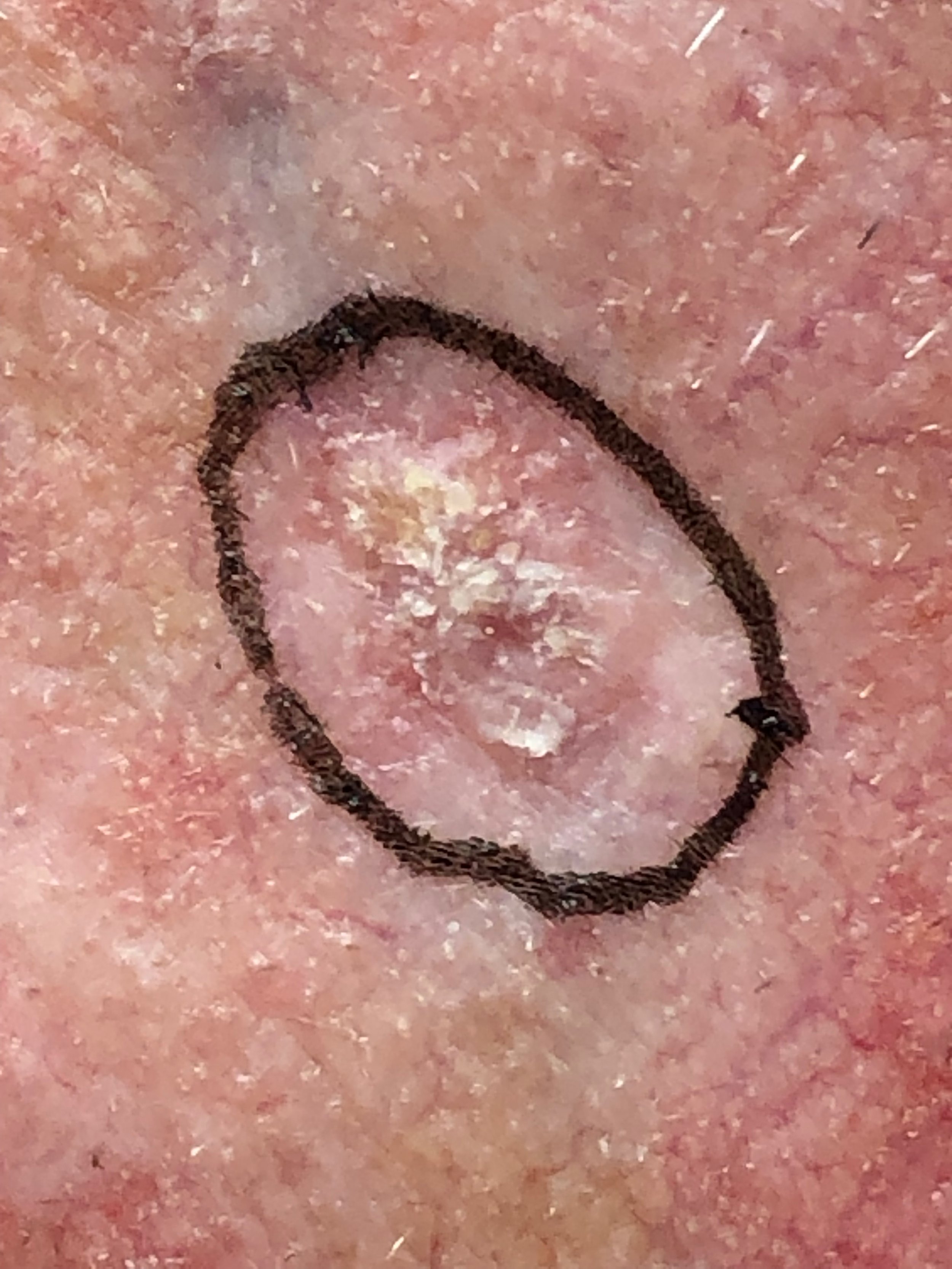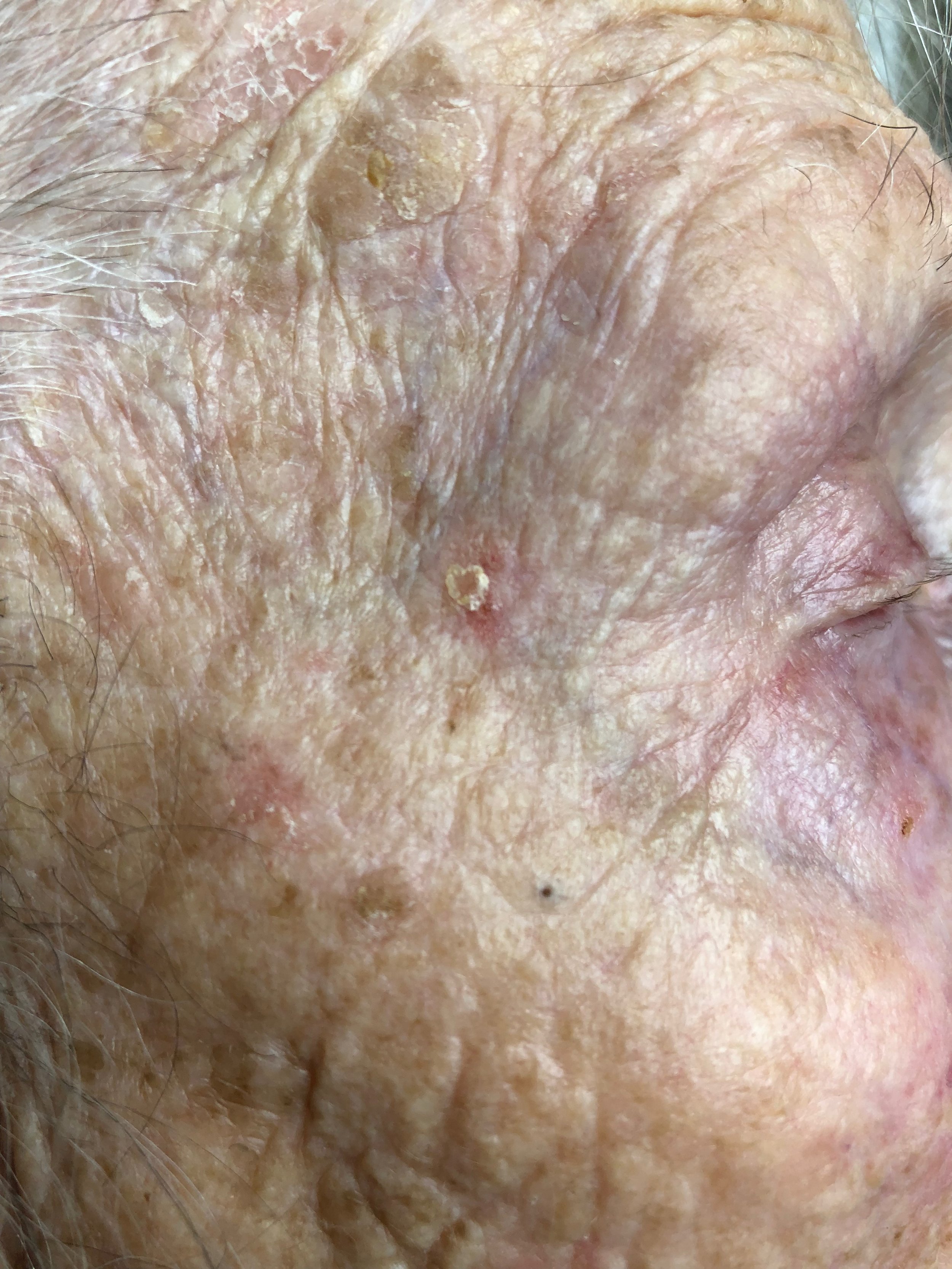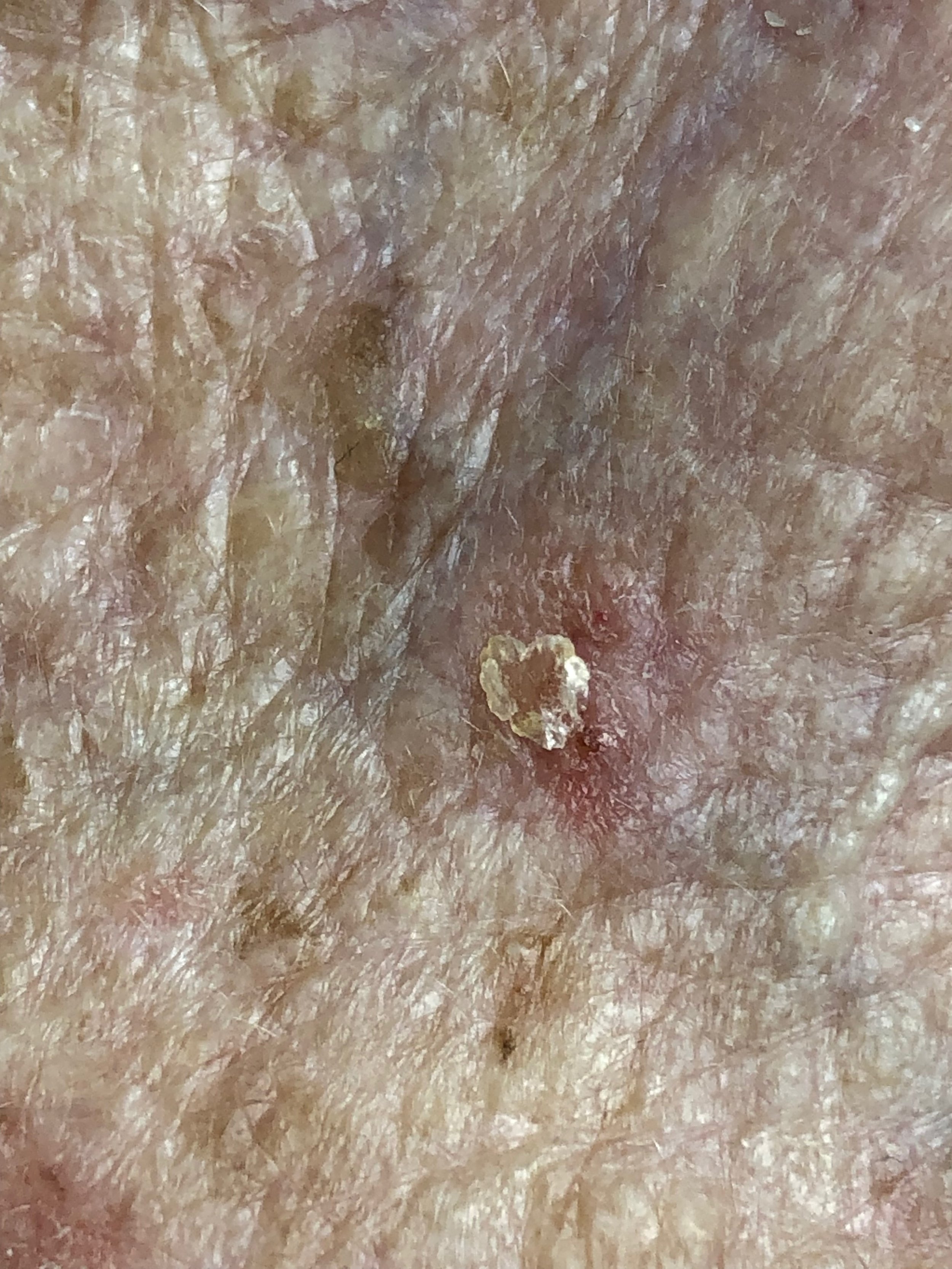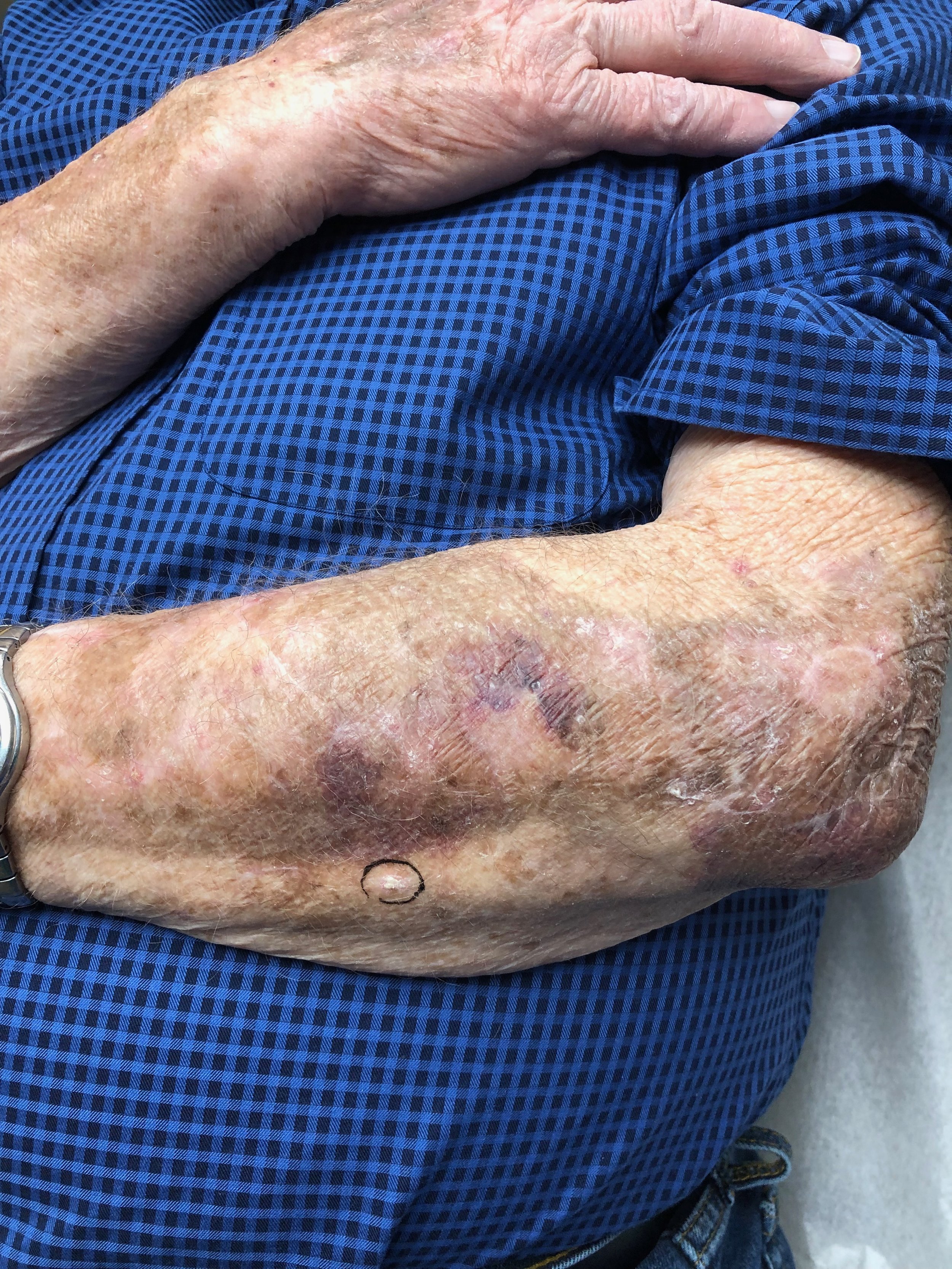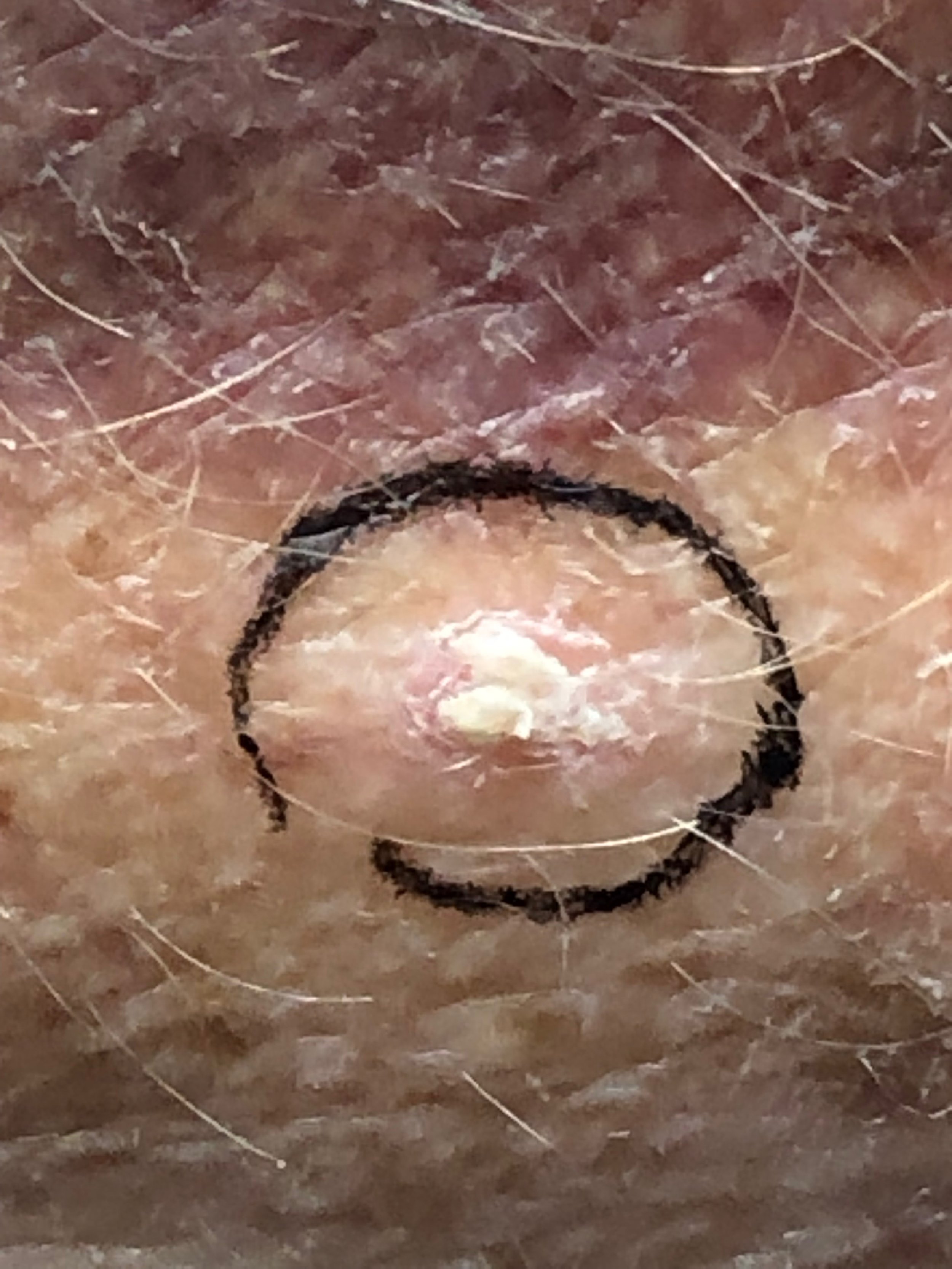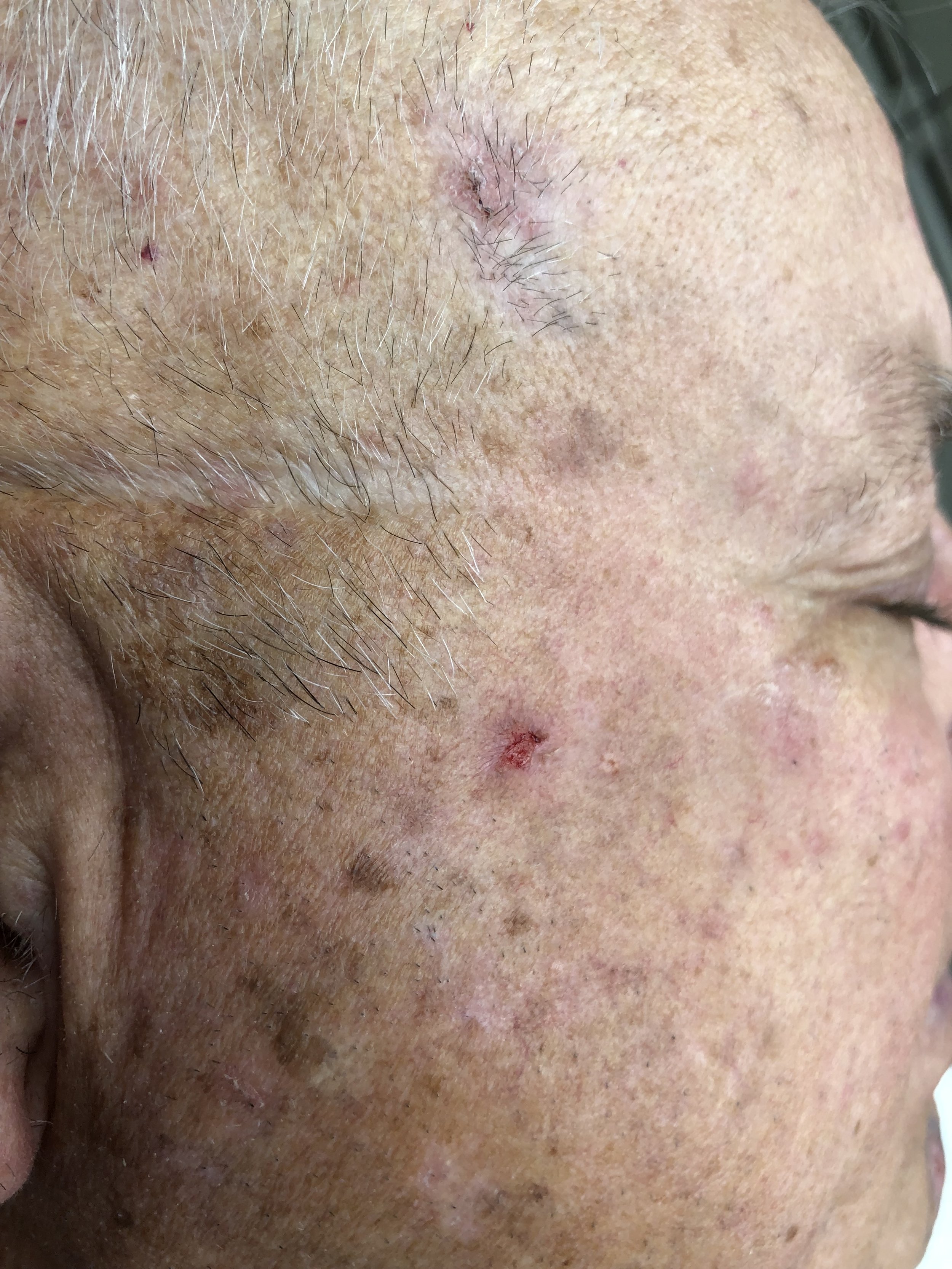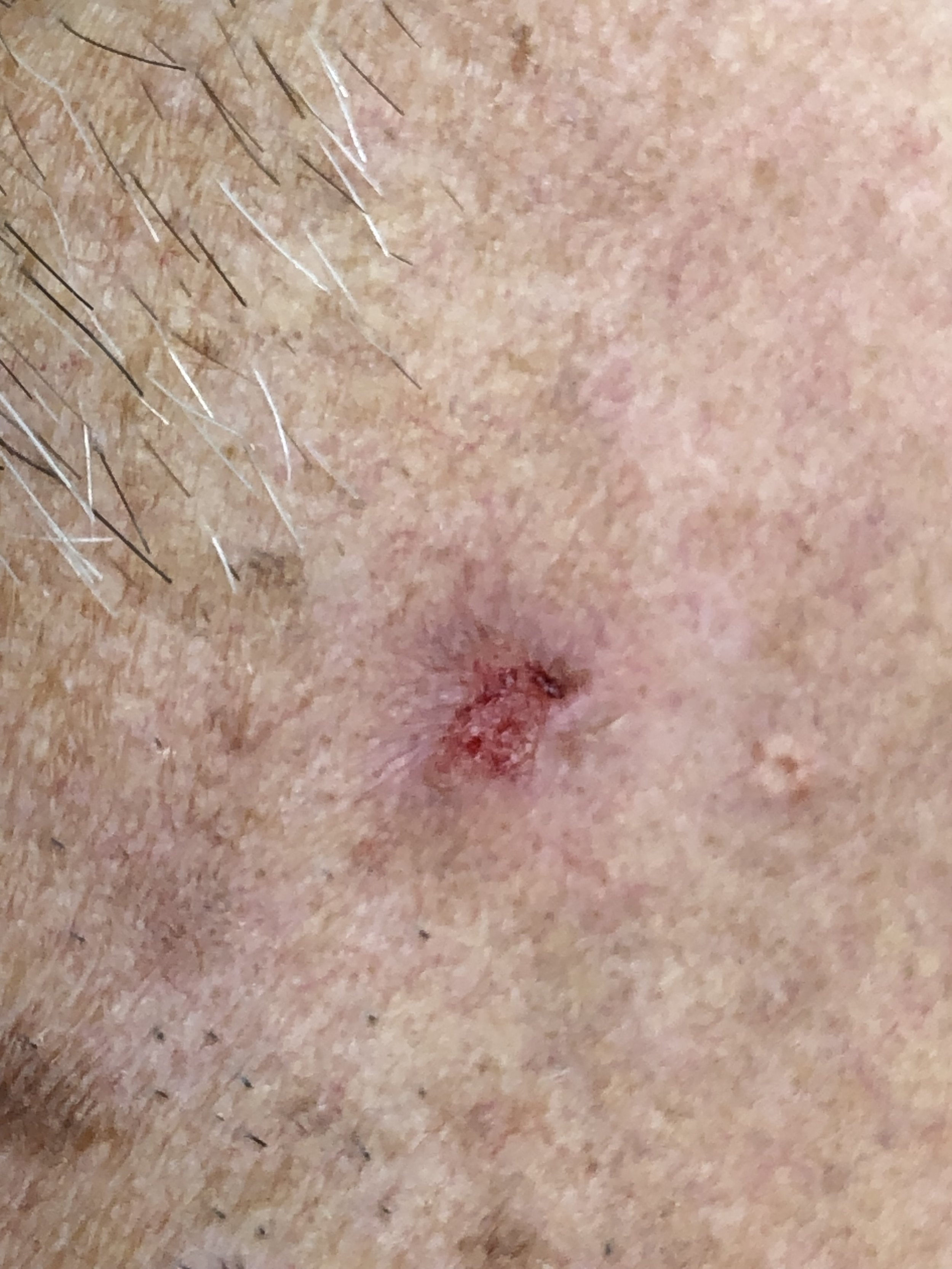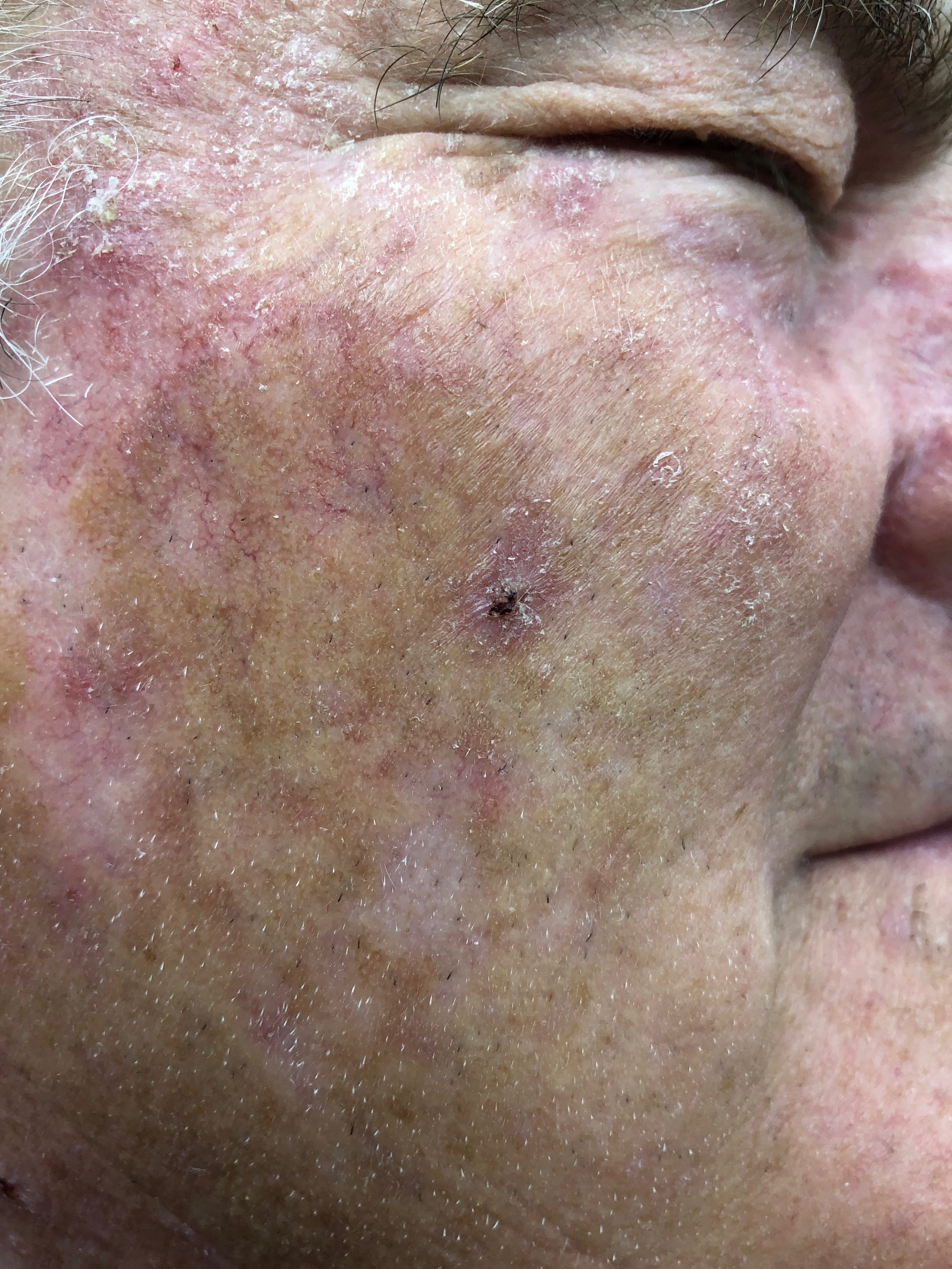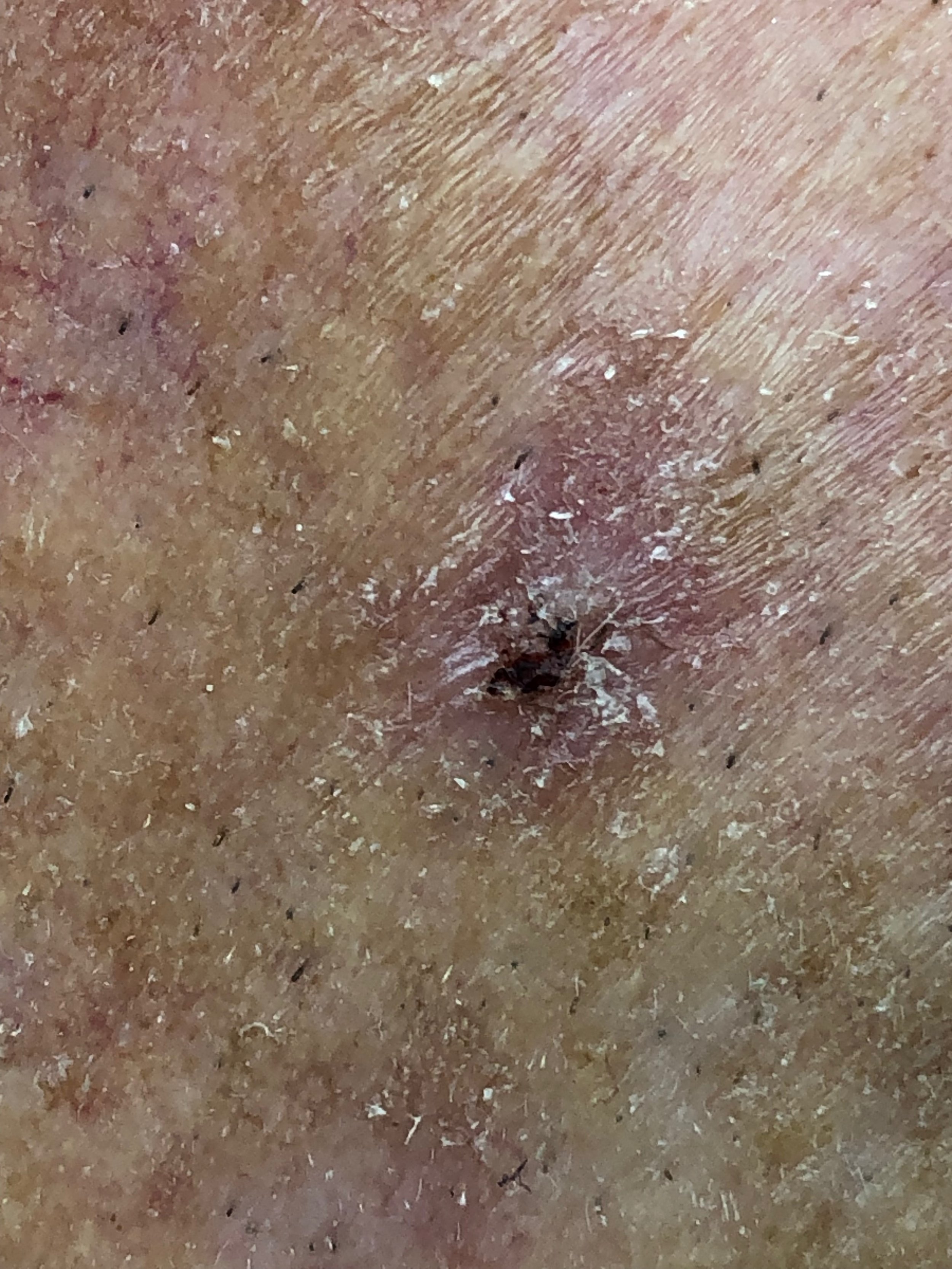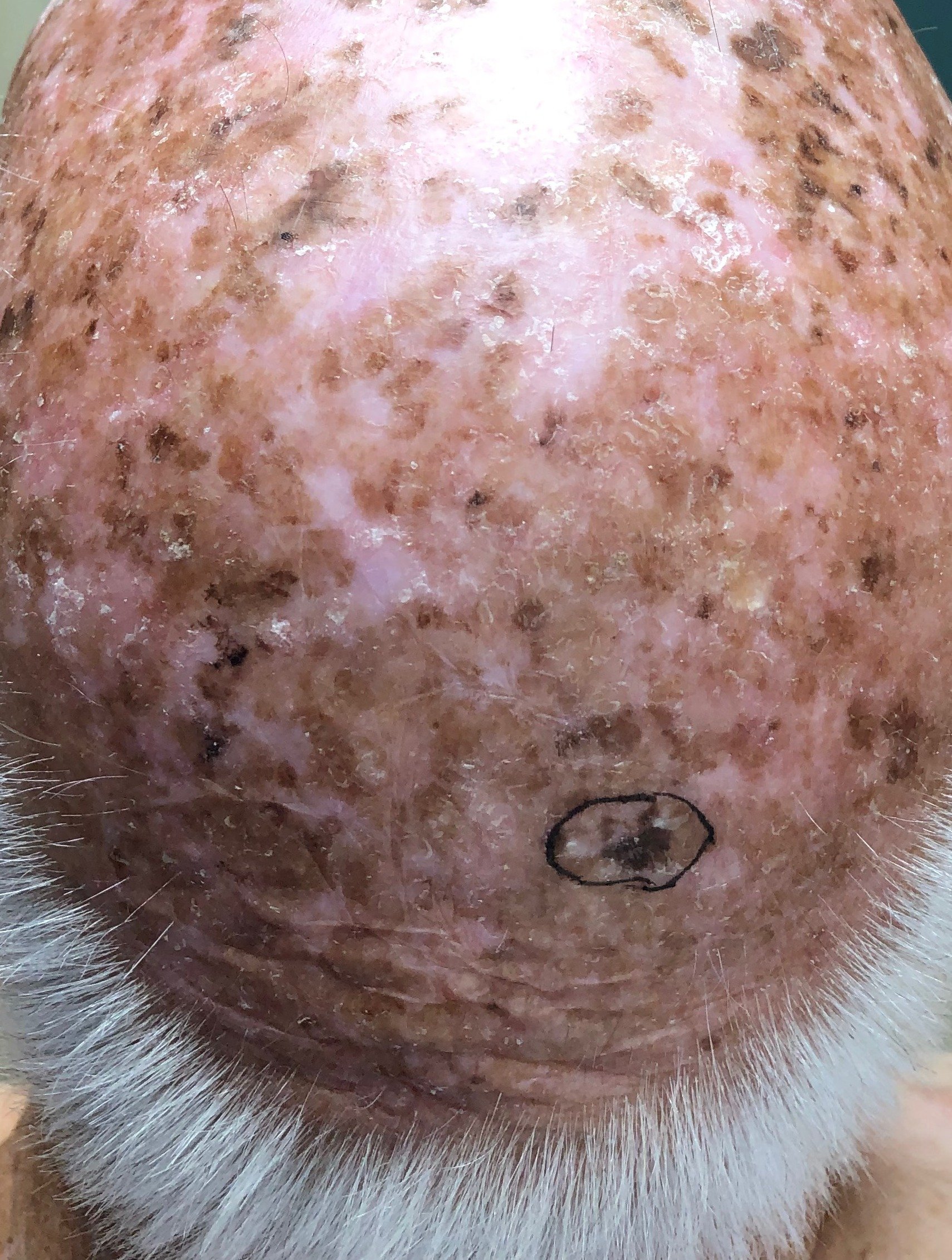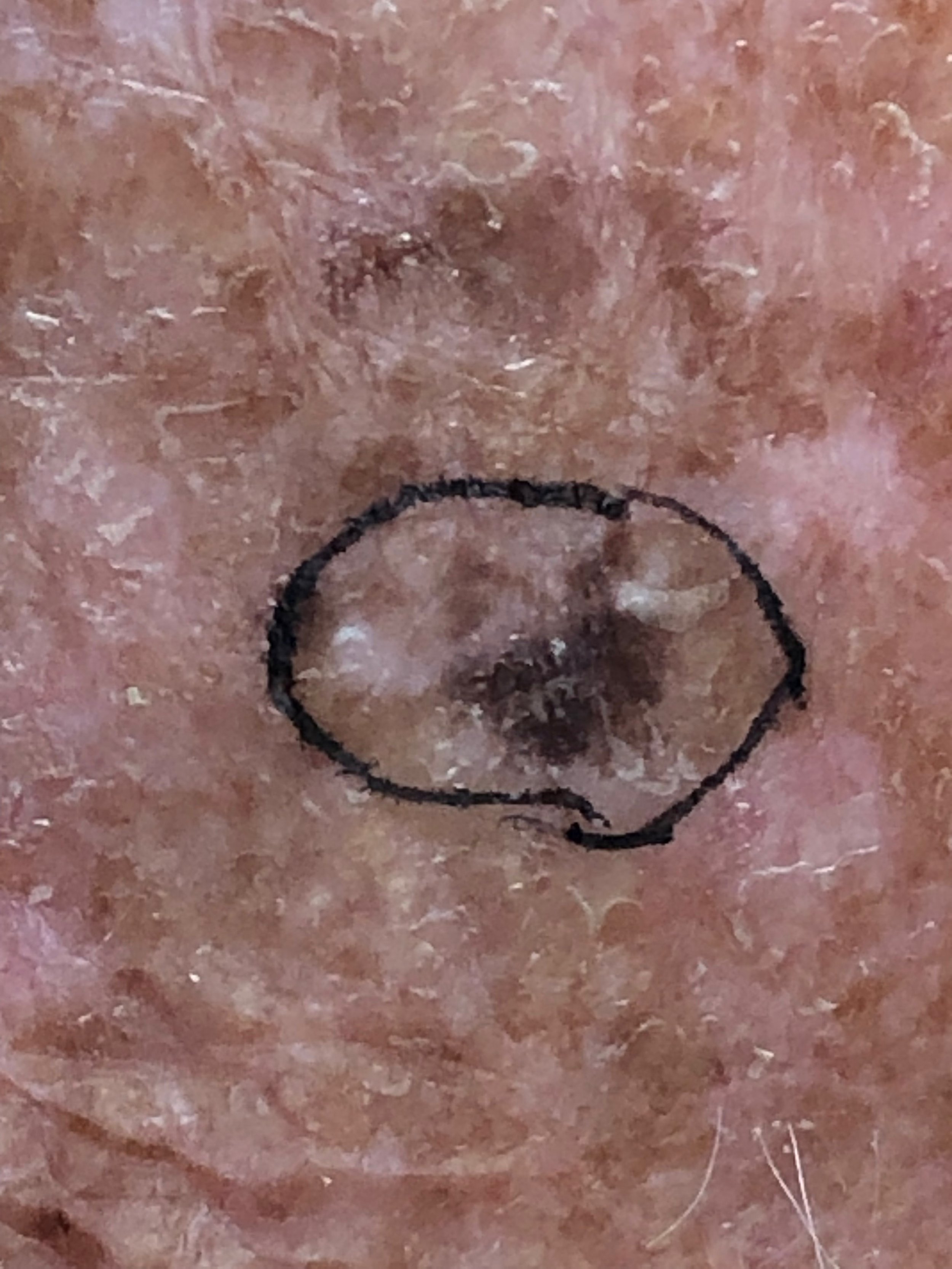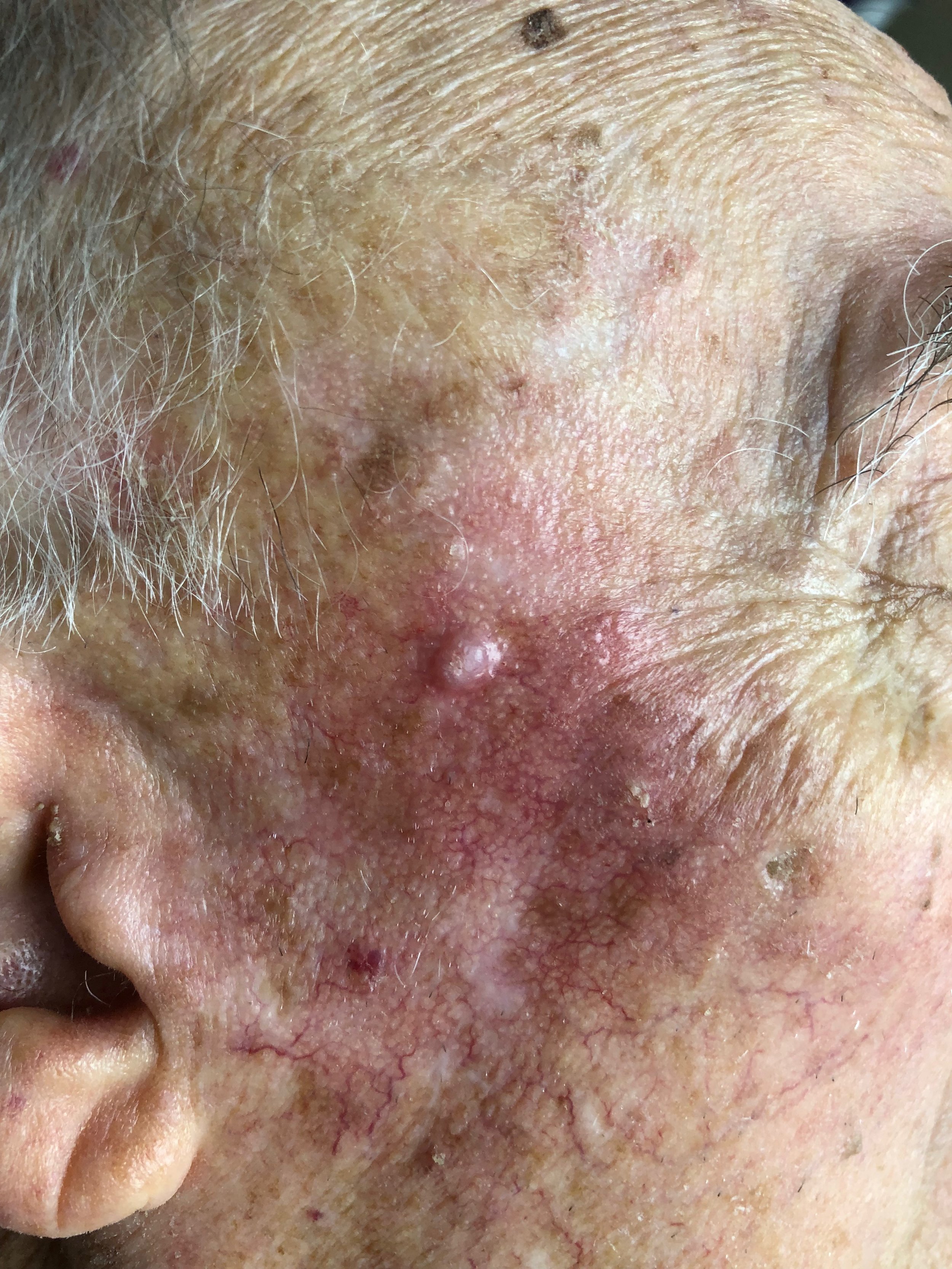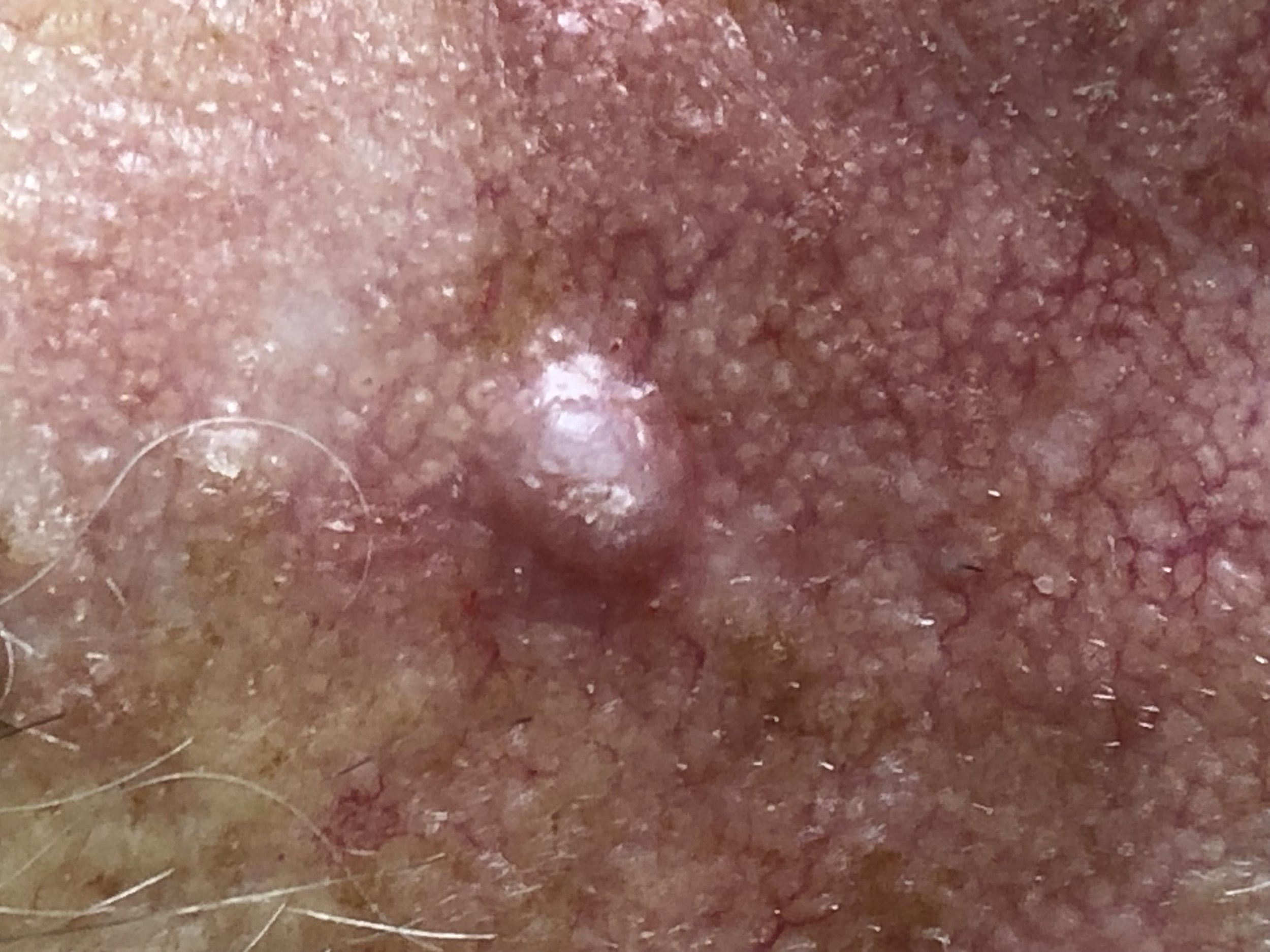Squamous Cell Carcinoma and Actinic Keratosis (“Pre-cancer”)
Developed squamous cell carcinomas often appear as red flat scaly patches or firm, gray/pink, crusty dome shaped nodules. (SCC Pic 2.1, 2.2; SCC Pic 3.1, 3.2)
Squamous cell carcinoma is very easy to cure when caught in its early stages. Early squamous cell carcinomas often appear as red, inflamed spots that are frequently tender (SCC Pic 6.1, 6.2; SCCIS Pic 1.1, 1.2; SCC Pic 4.2, 4.2; SCCIS Pic 3.1, 3.2).
SCC 7.2
Left untreated, squamous cell carcinoma can be very dangerous if they spread to lymph nodes or organs inside the body. This is especially true of those that are located on the ears, lips (SCC Pic 7.2) or arise in areas of chronic inflammation like ulcers, or areas previously treated with X-Rays or burns. Thus early detection matters to reduce the sickness and even death associated with this type of skin cancer.
Fortunately, every squamous cell carcinoma starts off for a period as a recognizable “pre-cancer” spot known as an actinic keratosis. And even more, fortunately, only a small percentage of actinic keratoses will progress to become a squamous cell carcinoma. Actinic keratoses are composed of the same cancerous cell type as a squamous cell carcinoma, but these cells are confined to the outermost portion of the outer layer of the skin. These cells primarily arise from a lifetime’s worth of sunlight. The vast majority of actinic keratoses will resolve over weeks due in part to a person’s immune system attacking them. Thus, they often appear as red, inflamed, tender scaly spots on sun-exposed areas (AK Pic 1.1, 1.2; AK Pic 2.1, 2.2). They often feel like a “briar” is stuck in the skin. Sometimes they will bleed if the scale is scratched off. (AK Pic 7.1, 7.2; AK Pic 9.1, 9.2)
They can even sometimes appear brown adding confusion that they might represent a melanoma (AK Pic 5.1, 5.2).
Pre-cancers may present next to each other such as Actinic Keratosis and SCC. Early detection of these in the early stages of AK or SCC will greatly reduce the extent and severity of the disease and disfiguring surgery required to cure this cancer (SCC 1.1, 1.2).
Early detection of these pre-cancers matters to prevent their progression to squamous cell carcinoma.

